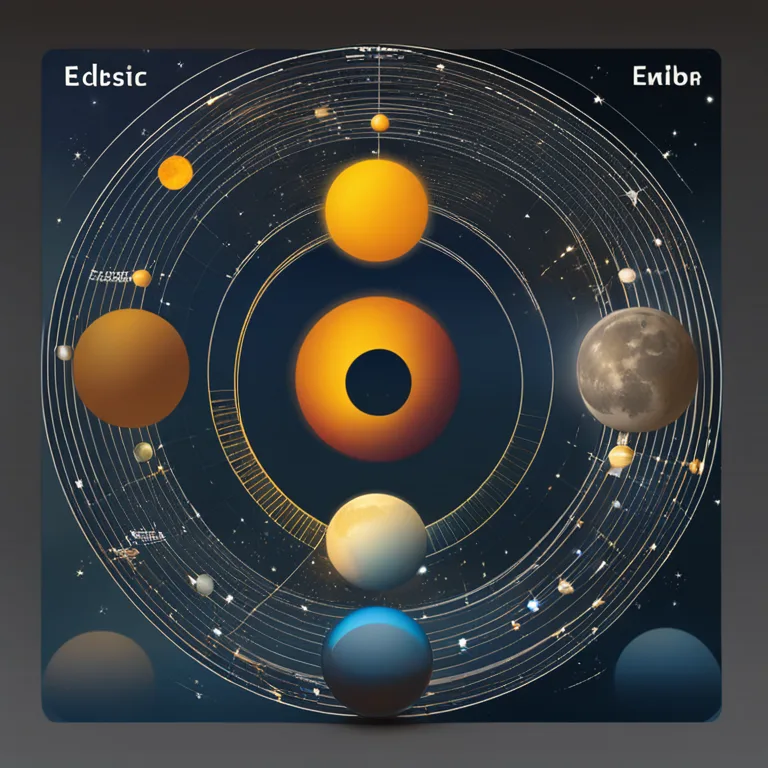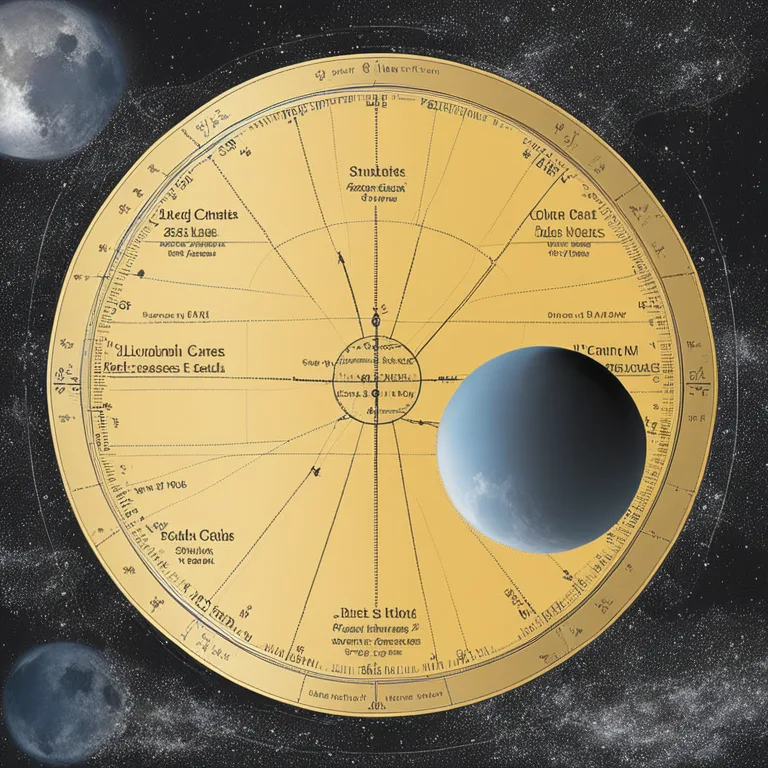
Moon Phases: A Celestial Cycle
Discover the celestial mechanics behind the lunar phases, the cyclic dance that directs the moon's appearance in our night sky.
article by Priya Deshmukh
The Basics of Lunar Phases
The Moon's phases are a result of its orbit around Earth, reflecting varying amounts of sunlight as observed from our vantage point. This celestial phenomenon occurs because the Moon does not emit its own light; instead, it shines due to sunlight reflecting off its surface. Throughout the roughly 29.5-day lunar cycle, we witness the Moon's illuminated portion grow and wane, a pattern that has intrigued humans for millennia. These phases transition smoothly from the new moon, through waxing crescent, to the full moon, then waning crescent, before returning to new moon.

Lunar Synchronization with the Sun
The Moon's synodic cycle—the time it takes to return to the same position relative to the Sun as seen from Earth—is the foundation of its phases. At the new moon, the Moon is situated between Earth and the Sun, its dark side facing us, rendering it virtually invisible. The waxing phases commence thereafter, as the Moon travels around Earth and more of its sunlit side becomes visible each night. The crescendo of this cycle is the full moon, occurring when Earth lies between the Moon and Sun, fully illuminating the Moon's Earth-facing side.

Cultural and Astrological Significance
Historically, lunar phases have held immense cultural and agricultural importance, serving as a natural calendar for farmers. In astrology, moon phases are believed to symbolize different energies and influences. The new moon is often associated with beginnings and the full moon with culmination and release. In 2024 and beyond, many astrologists will advise individuals to embark on new endeavors during a new moon and to reflect and let go during a full moon, suggesting a harmony between celestial cycles and human activities.

Ecliptic Interactions
The Moon's phases are also intricately tied to its position on the ecliptic, the path that the Sun and, to a lesser extent, the Moon, appear to trace across the sky. Eclipses occur when the Moon's orbit crosses the ecliptic at a full or new moon, causing solar or lunar eclipses, respectively. While these events are linked, they are not reasons for the phases, but rather, special occurrences that arise from the interplay of the Earth, Moon, and Sun's positions.

Observing the Lunar Calendar
For those interested in observing the lunar calendar, technology and stargazing intersect as modern apps and almanacs offer precise phase times, astrological forecasts, and personalized horoscopes. Looking ahead, astronomical predictions for 2024 and later are already marking calendars with new moons conducive for setting intentions and full moons ideal for reflection, following the moon's timeless rhythm.
Phases' Influence on Biorhythms and Compatibility
In the realm of biorhythms and compatibility, moon phases are thought to influence human behavior and relationships. While the scientific community remains skeptical of such claims, enthusiasts relate the waxing and waning of the moon with ebbs and flows in emotional and physical states. Partners may look to the moon phases to better understand their cycles of energy and compatibility as they navigate their connections under the celestial influence.
Published: 12/22/2023
Modified: 12/22/2023
More predictions
Come back here soon to learn more about yourself and your future


2024 Moon Phase Calendar Insights
Discover the influence of lunar cycles in 2024 with our detailed moon phase calendar and its astrological implications.


Moon Phases and Relationship Connections
Delve into the mystical relationship between lunar cycles and finding your soulmate, and how the moon's energy influences love and destiny.


Soulmate Connections & Moon Phases
Discover how moon phases influence your search for a soulmate and deepen your connections.